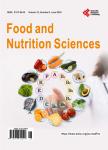Vitamin D Insufficiency among Women Post-Partum in Northern Sweden—A Public Health Concern
作者机构:Department of OdontologyPediatric DentistryUmea UniversityUmeaSweden Department of Clinical SciencesPediatricsUmea UniversityUmeaSweden
出 版 物:《Food and Nutrition Sciences》 (食品与营养科学(英文))
年 卷 期:2017年第8卷第1期
页 面:99-109页
学科分类:1002[医学-临床医学] 100201[医学-内科学(含:心血管病、血液病、呼吸系病、消化系病、内分泌与代谢病、肾病、风湿病、传染病)] 10[医学]
基 金:financial support provided through regional agreement between Umea University and Vasterbotten County Council on cooperation in the field of Medicine Odontology and Health(TUA)
主 题:Vitamin D Insufficiency Fungal Infection Postpartum Public Health Season
摘 要:Pregnancy and post-partum represent a period of susceptibility for vitamin D insufficiency. This study investigated S-25 [OH] D levels in women in northern Sweden 4 weeks post-partum and its association with selected background factors. Blood from 100 healthy women were analyzed for iron status and serum levels of S-25[OH] D using ionization-mass spectrometry (HPLC-APCI-MS). 50 nmol/L was categorized as insufficiency and 25 nmol/L as deficiency. Maternal BMI, dietary habits, fungal infections during pregnancy, and infant birth characteristics were collected using questionnaires and medical charts. 58% were vitamin D insufficient whereas 10% had deficiency. Insufficiency was most common during winter (OR = 2.77;95% CI = 1.1-6.96) and women with deficiency reported lower milk consumption;11.3 ± 22.8 intakes per months vs. 34.0 ± 28.9 for those above 25 nmol/L (p °49 N. The odds of being insufficient were increased during winter whereas milk consumption was negatively associated with deficiency. The low vitamin D-levels particularly during winter is a public health concern. From a public health perspective it has to be considered whether dietary advices alone should be modified or if supplementation with vitamin D during pregnancy and the post-partum period also is needed.



